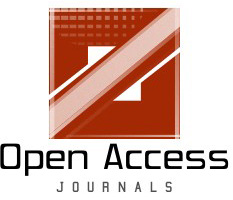Download Cover Page
IJRSS_September_2020......
PARTICULAR
|
Page No.
|
 ERADICATION OF STUDENTS’ MISCONCEPTIONS AND EFFECTIVENESS OF INNOVATIVE IDEAS OF TEACHING IN GEOGRAPHY
ERADICATION OF STUDENTS’ MISCONCEPTIONS AND EFFECTIVENESS OF INNOVATIVE IDEAS OF TEACHING IN GEOGRAPHY
Manjusha Barman, Dr. Kausik Chatterjee
Abstract:
This study focused on the eradication of students‟ misconceptions in Geography. The main purpose of this research was to identify the misconceptions in Geography and attempt to established the comparative effect of innovative ideas of teaching in correction of misconceptions by comparing the conventional method of teaching among VIII standards students‟ of South 24Pargana district of West Bengal. This study included Quasi-experimental research which described the level of students‟ misconceptions and comparative effect of teaching methods in correction of misconceptions. It involved two groups of students, experimental group and control group. In this study 200 VIII standard students of three high schools made up the sample. The sample was selected by using purposive random sampling technique. Self-developed tool Misconception Identification Test (MIT) was used for the study. The Cronbach‟s alpha reliability coefficient of the scores was estimated as 0.77. Content validity was established by senior experts in this field. Descriptive statistics and also inferential statistics are worked out for analysis the results. The results revealed that the levels of misconceptions of two groups were same and innovative ideas were more effective and showed a significantly higher than conventional method of teaching after eradication of misconceptions identification tests score. Also concluded that there was no difference between boys and girls in correction of misconceptions through innovative ideas. The findings indicated that the MIT was a reliable and valid measuring tool for investigating VIII standard students‟ conceptual understanding and correction of misconceptions.
Download full Length
Paper......
|
1-11
|
 ROLE OF SOCIO ECONOMIC FACTORS IN DEVELPOMENT OF SELF ESTEEM AMONG TRAINEE TEACHERS
ROLE OF SOCIO ECONOMIC FACTORS IN DEVELPOMENT OF SELF ESTEEM AMONG TRAINEE TEACHERS
Sourish Sikdar, Sampa Biswas
Abstract:
Teachers are the building blocks of an educational edifice. They play a vital role in educating and teaching future generations. Therefore training institutions have played a vital role in ensuring adequate development of knowledge, skills, and attitudes necessary for teaching. The purpose of the study is to find out the effect of socio economic factors on an individual’s self- esteem development of trainee teachers. The researchers selected two hundred twenty four (224) trainee teachers from different teachers’ training college of West Bengal as sample for the study. Researchers used standardized tool, Rosenberg Self-Esteem Scale (RSES; Rosenberg, 1995) to measure the level of self -esteem. On the basis of the statistical analysis and interpretation it is find that ,a significant interaction effect of social and economic factors on development of self-esteem and also revealed that a significant interaction effect gender and local on development of self-esteem of trainee teachers.
Download full Length
Paper......
|
12-21
|
 STUDY OF RELATIONSHIP BETWEEN ONLINE FOOD ORDERING, LIFESTYLE AND STUDY HABITS OF SECONDARY SCHOOL STUDENTS
STUDY OF RELATIONSHIP BETWEEN ONLINE FOOD ORDERING, LIFESTYLE AND STUDY HABITS OF SECONDARY SCHOOL STUDENTS
Dr. Meenakshi Jindal, Ms. Sanya Goyal
Abstract:
The present study was conducted on the sample of 59 randomly selected secondary level students taken from various schools of Chandigarh to show the relationship between online food ordering, lifestyle and study habits. The raw data was collected by administering the scales, Online Food Ordering, Lifestyle and Study Habits constructed and validated by the investigators themselves. The values of coefficient of correlation were calculated to study the relationship among the variables. The result indicated that the people with sedentary and passive lifestyle prefer to order food online more and more and vice versa. Also, students with good study habits have less tendency to order food online and vice versa. However, healthy lifestyle led to good study habits
Download full Length
Paper......
|
22-30
|
 Food Security and Public Distribution System: An Analysis of Nutritional Well-being in India
Food Security and Public Distribution System: An Analysis of Nutritional Well-being in India
Mohd Toufeeq Ahmad
Abstract:
Problems of undernutrition and malnutrition still persisted in spite of high spectacular economic growth and self-reliance in foodgrain production for a long time. The government formulated and implemented various social assistance programmes and policies to reduce poverty, hunger, and malnutrition. But these programmes have ridden with corruption, leakages and inefficiency in theirfunctioning. Government, from time to time, has introduced various technological reforms to curb malpractices and make these programmes well-functioning that may translate maximum benefits to the beneficiaries. Access to food, to a large extent, depends on the household’s productive assets, purchasing power and social assistance programmes in place. Sometimes, access to these programmes are mediated through the caste, class, ethnicity and gender, and in turn, worsens the food security situation. The solution to all these problems lies in the strong will power of the state to make the programmes well-functioning by adopting ICT based techniques and a strong grievance redressal mechanism.
Download full Length
Paper......
|
31-39
|
 Women’s Sacrifice for Drinking Water in the Western Himalayan Region A Case Study of Mandi, Bilaspur and Chamba Districts of Himachal Pradesh
Women’s Sacrifice for Drinking Water in the Western Himalayan Region A Case Study of Mandi, Bilaspur and Chamba Districts of Himachal Pradesh
Dr. Sandeep Singh Raghav
Abstract:
Indian society has been a patriarchal society where in the female gender has faced a lot of atrocities and women have been subjected to many evil customary practices. Not only they had to follow these evil traditions, but they were sometimes forced to lay down their lives for the sake of well-being of either their husbands or the society. One of these included the problems related to the availability of drinking water in the studied region. For this sake the rulers of the princely states resolved to human sacrifices as guided by their priests and they sacrificed women instead of men and mostly preferred their daughter-inlaws. A few descriptions related with this practice are found in the folklore of Mandi, Bilaspur and Chamba regions of Indian State of Himachal Pradesh. There are also some descriptions of this practice in some books on the history of these regions. This customary practice prevailed not only in the studied regions, but almost in every part of western Himalayas. There are water sources even today in the areas where the sacrifices were made. The aim of this article here is to do research on this tradition in Mandi, Bilaspur and Chamba regions and how this tradition affected the society. Also, an attempt has been made to trace the connection between folk traditions and historical development related to this practice
Download full Length
Paper......
|
40-50
|
 Access to Institutional credit among Schedule Tribes in Telangana – A case study of Shankarpally Mandal in Ranga Reddy District.
Access to Institutional credit among Schedule Tribes in Telangana – A case study of Shankarpally Mandal in Ranga Reddy District.
S. Kannan
Abstract:
The persistence and dominance of non-institutional financial sources in the rural credit is a major concern in India, particularly among the Scheduled Tribes households. In this context, present study focuses on the penetration of credit flow among the tribal household in Telangana. The study covers both macro and micro-level perspective of access to institutional and non-institutional sources among the tribal households. The macro-level and micro-level analysis portrays that they depend upon non-institutional credit mainly from money lenders and relatives. Further, borrowing from money lender makes them to lose their rights on selling their farm products on their own, which leads to falling in debt trap. The study suggest that formal financial institutions should develop more flexible products and services to meet the income and expenditure pattern of the tribal households, to come out of the debt trap
Download full Length
Paper......
|
51-62
|
 Effect of internalization as evincive on academic achievement in science
Effect of internalization as evincive on academic achievement in science
Shanti Swarup Jana, Dr. Satyajit Kar
Abstract:
:Concept internalization is conceived as the pre-requisite condition for achievement through the agency of self-regulation of learning science. Internalization is the individualway of structural and functional transformation of external relations into internal reconstruction of conception leading to task mastery with ease in appropriation of cultural mediational tools. It establishes a shift from inter-psychological plane to intrapsychological plane of consciousness even functional with automatization in the absence of concrete external links.It minimizes the probability of rote memorisation in higher order science learning objectives.The on hand study is committed to disclose the effective circumstantial outcome of internalization upon science achievement through the selection of specific experimental manipulation. Eighty 6th standard learners from an HS rural govt.- aided school following the state board (WBBSE) curriculum of study serve as participants of the experimental study – divided into two equivalent halvesthrough randomisation after the administration of entry level pre-test of the dependent variable – impartially for one (40) is treated by problem solving method (PSM) of teaching and the rest half (40) by play way method (PWM) of teaching for the transaction of selected science lessons in three units. Internalization and achievement data are obtained by the application of SLIQ scale and SAT in three units respectively after the instructions of nearly two months duration. PSM is found to the predictor of science achievement in higher order cognitive levels for all the three units. But no efficiency of PSM over PWM is established in terms of learner’s concept internalization scores. The two-way 3 (Unit I vs Unit II vs Unit III) x 2 (PSM vs PWM) ANOVA revealed the significant main effect of only teaching method on achievement. Concept internalization exerts significant effect on Unit I achievement for the learners instructed by PSM of teaching. But no effect evinced for average and low level internalized group on Unit II and Unit III achievement for PSM group. The effect was overall significant except average and low level internalized group of learners instructed by PWM of teaching in all the three units. The analysis for total sample follows the trend yielded by the learners instructed by PSM of teaching. Finally, we sum up our analysis cum discussion through some educational implications about science teaching learning in line with our major research findings.
Download full Length
Paper......
|
63-98
|
 Review of The DeLone and McLean Model of Information Systems Success' Background and it's An application in The Education Setting, and Association Linking with Technology Acceptance Model
Review of The DeLone and McLean Model of Information Systems Success' Background and it's An application in The Education Setting, and Association Linking with Technology Acceptance Model
Samar Zaineldeen, Li Hongbo, Aka Lucien Koffi
Abstract:
Evaluation for the success of the Information System (IS) considerable importance; furthermore, the success of the IS is subject to the proper implementation of technology by human-resource. Currently, there are a variety of models to assess the success of IS, such as the Technology Acceptance Model (TAM), Delone and McLean model of IS success, and many more. A number of models can be utilized as a basis to assess the success of IS, Updated DeLone and McLean model, and DeLone and McLean's model are examples that are used extensively as references, which apply six factors in measuring IS execution. This paper provides a general idea of the current state of research on the IS Success Model. Thus, it gives a brief point of entry into the background of theories and its adoption in the education setting. Moreover, this paper presents an interesting association linking between the DeLone and McLean model, in addition to the Technology Acceptance Model was revealed
Download full Length
Paper......
|
99-109
|
 TO STUDYEDUCATIONAL FACILITIES AND OPPERTUNITIES FOR STUDENTS AT SECONDARY LEVEL IN NAWAB SHAH SINDH PAKISTAN
TO STUDYEDUCATIONAL FACILITIES AND OPPERTUNITIES FOR STUDENTS AT SECONDARY LEVEL IN NAWAB SHAH SINDH PAKISTAN
Dr.Asia Khatoon, Syed Ahsan Bukhari, Shahnaz
Abstract:
Facilities greatly reduce the impact of low-profile academic exhibitions and inappropriate offices meaning poor execution. The purpose of this study was to investigate the causal relationships between school office conditions and school outcomes, for example, poor student achievement, participation, discipline, completion rate, and teacher occupation in schools. Participation rate the condition of the schools was controlled by the Environmental Assessment (TLEA) of the overall learning of the secondary or primary school secondary schools in Tech Text, including between 1000 and 2000. Limit entries and entries are less than 40%. The population of each school in the population is from nine to twelve. Information was collected through the Public Education Information Management System (PIMS) under the Texas Education Agency's Success, Participation, Discipline, Utilization Rate and Educator Rate Information. Recreational attainment, participation, discipline, final rate and turnover rate of education and their interaction with the class offices were examined and combined with the five ward factors for each of the TLEA articles and sub-sections. Different associated models were used for thinking. The main test of the test worked well with this: the first, unclear achievement, participants, and final grades were not found to be so broad in terms of class office conditions that the TLEA scale measured 0.05. Error detected. Second, control, or behaviour, was primarily identified with TLEA. This suggests that TLEA could potentially be used as a disciplinary factor in the test population of schools in subsidiaries. Third, the teacher change rate was attributed to the specific learning location and the support space with the TLA subscriptions, due to the lack of correlation with the support location. Writing from previous research depends on whether there is a relationship between each of the five factors that depend on the test. Be that as it may, that test only made unacceptable orders and important discoveries in the areas of teacher business
Download full Length
Paper......
|
110-116
|
 CHANGING THE TREND OF FUNCTIONAL CLASSIFICATION OF TOWNS IN MAHARASHTRA STATE
CHANGING THE TREND OF FUNCTIONAL CLASSIFICATION OF TOWNS IN MAHARASHTRA STATE
Dr. Pramod B. Waghmare and Dr. Parag A. Khadke
Abstract:
This paper investigates the functional classification of towns in Maharashtra state in 2011.Urban settlements can be considered for their certain function from ancient periods. Cities may be classified on the basis of economic activities carried on in the city. Certain economic activities may have acquired greater significance than others. Some cities are known for their administrative status as State, District capitals, others for their educational institutions and yet others for trade and transport. Towns are therefore classified according to their dominant function. These functions are caused by natural or manmade factors like site, physiography, environment, forest, resources human activity, economic development, populations etc. The towns are classified according there functions as administrative, education, defense, transportation, cultural, commercial, historical, tourist, mining, manufacturing towns etc.The functional associations of the towns are classified in to eight groups. There are three towns with eight functions, which are major cities in the state. They were Kolhapur, Nagpur and Nashik.These all eight, seven and six functions towns are dominant in the economic, political, educational, social and historical functions. Sixteen towns are dominates in five functions, forty eight in four functions, seventy seven in three functions, eighty five in bi functions and eighty towns are dominant in single function.
Download full Length
Paper......
|
117-129
|
 CHARACTERIZATION IN ANITA DESAI’S FIRE ON THE MOUNTAIN AND KIRAN DESAI’S INHERITANCE OF LOSS- STUDY BY COMPARISON
CHARACTERIZATION IN ANITA DESAI’S FIRE ON THE MOUNTAIN AND KIRAN DESAI’S INHERITANCE OF LOSS- STUDY BY COMPARISON
MRS. NILOFAR RASHID REZA
Abstract:
Anita Desai an Indian novelist and short story writer especially noted for her sensitive portrayal of the inner life of the female characters.Severalof Desai‟s novels explore alienation of middle class women. Anita Desai‟s novel Fire On The Mountain won the National Academy Award in 1978 and the Winfred Holtby Memorial Prize in 1977. Fire On The Mountain (1977) set in Kasuli, a hill station, focused on three woman and there oppressed life.
Download full Length
Paper......
|
117-124
|
 The Wellness and Personality of Ex-service men with Lifestyle Diseases
The Wellness and Personality of Ex-service men with Lifestyle Diseases
Akhil P. Sivan, Fr Lijo K. Joseph, Dr Mathew Kanamala, Dr Justin Joseph, Manu Kurian
Abstract:
People from different parts of the nation join the armed forces; get involved in the activities of the force for a period of time. After the period of service, the person retires from the armed force and gets introduced into a different community. The present study is aimed at the wellness and personality of Ex-service men with lifestyle diseases. The major objective of the study is to evaluate the difference in the wellness and personality of the Ex-servicemen with lifestyle diseases. Convenient sampling was used for the selection of the samples. The study was conducted on 156 Ex-servicemen who have served in different sections of the armed force. Ex-servicemen who have Diabetics, Cardiac diseases and BP/Cholesterol variations are selected for the study. The researcher used questionnaire method and interview method for the collection of relevant demographic details from the respondents.The results revealed that there is a significant relationship between the age, wellness and personality of the Ex-service men with lifestyle disease. Further, the study showed that there is a significant relationship between the wellness and personality of the Ex-servicemen with lifestyle diseases
Download full Length
Paper......
|
125-130
|
 CONTRIBUTION OF FREEDOM FIGHTER THAKUR PYARELAL SINGH IN NATIONAL MOVEMENT
CONTRIBUTION OF FREEDOM FIGHTER THAKUR PYARELAL SINGH IN NATIONAL MOVEMENT
Vipin Tirkey, Dr. Pradeep Shukla
Abstract:
At the very beginning of 17th Century, the East India Company came into India during the reign of Queen Elizabeth of England for the trade purpose and the members of the company were to get more and more benefits through trading. But after the battle of Plassey in 1757, the company’s aim was for ruling not for trading. Slowly the East India Company became the ruling company first starting from Bengal and then later on their aim was to capture the throne of Mughal Baadshahin Delhi. After the revolt of 1857, the power was transferred from the company to British Crown. In this way, from 1857 to 1947, so called the nation India/Bharat was ruled over by the British Crown. Under the both rules Company and British Crown, they followed the policy of divide and rule, drained a lot of wealth from India to England, the people of India became poor to poorer, always paid heavy revenues to the rulers and so on. On the other hand, there were not such a great national leaders who could lead the people of nation and develop national consciousness towards freedom till the second decade of 20th Century. As soon as the ‘Father of Nation’ Mahatma Gandhi arrived to India from South Africa, the situation of the nation was going to change. At national level various movements were launched by Gandhiji in order to set free the nation, those movements influence were clearly seen in across the country including the Chhattisgarh region also. At Durg district of Madhya Pradesh (at present Chhattisgarh), one of the famous freedom fighters called Thakur Pyarelal Singh sacrificed his whole life for raising thevoices against the British rule from 1905 onwards and later on contributed in Non-Cooperation Movement, Jhanda Satyagraha, Civil Disobedience Movement, Quit India Movement and Bhoodan Movement and so on. Beside this, for national awakening and fight for rights for the people of this region Thakur Singhjialways stood, therefore, he is considered as thefounder of Cooperative,Labours, Patta Mat Lo, Lagaan Mat Do Movements. In the year 1954, during thepadyarta of BhoodanYagya in Jabalpur (Madhya Pradesh), Thakur Singhji took his last breath of his life and was buried at the bank of Kharunriver in Raipur (at present Capital of Chhattisgarh.). This research paper highlighting the Contribution of Freedom Fighter Thakur Pyarelal Singh in National Movements and his great efforts done towards various movements such as Cooperative, Labour, Bhoodan and Sarvodaya etc., which occurred at different time in Chhattisgarh region.
Download full Length
Paper......
|
131-139
|
 UNIT COST OF UNIVERSITY EDUCATION HOUSEHOLDS INCUR AND ITS ECONOMIC IMPLICATION FOR STUDENTS IN SELECTED PRIVATE UNIVERSITY CAMPUSES IN UASIN GISHU COUNTY, KENYA
UNIT COST OF UNIVERSITY EDUCATION HOUSEHOLDS INCUR AND ITS ECONOMIC IMPLICATION FOR STUDENTS IN SELECTED PRIVATE UNIVERSITY CAMPUSES IN UASIN GISHU COUNTY, KENYA
Endesia Nicholas Munyasi, Dr. Lydia Kipkoech, Dr. Agnes Oseko
Abstract:
Education is a very crucial foundation for the advancement of any given nation in social, political and economic terms. This is because of the role played by education in enhancing economic growth, productivity, national development, and social equality. This is the reason why individuals, families and governments of different countries of the world continue to invest so much at all educationalstages. The aim of this research work was to determine the influence of unit cost of university education households incur on economic implication of students in selected private university campuses in Uasin Gishu County, Kenya.
Download full Length
Paper......
|
140-151
|
 DEMONETISATION AND ITS IMPACT DURING COVID-19
DEMONETISATION AND ITS IMPACT DURING COVID-19
Virosanuo Solo
Abstract:
With four years after demonetisation and a pandemic hitting India the economy is hit hard and majority of the people especially the rural population have been severely affected. Never the less, digital payment has made life simpler and has reduced social interaction for cash based transactions. The shift towards digital payments comes with a cost, proper internet connection which is one major limitation especially rural population.
Download full Length
Paper......
|
152-156
|
 Self Help Groups (SHGs) - A Tool for Socio-Economic Development of the Rural Women in West Bengal, India: A Study
Self Help Groups (SHGs) - A Tool for Socio-Economic Development of the Rural Women in West Bengal, India: A Study
Dr. Soma Saha
Abstract:
Poverty is a major concern for many of the developing countries. The financial requirement is one of the basic needs of the poorer sectionof the society, especially rural women, for their socio-economic development. This paper is an attempt to study the role of Self-Help-Groups (SHGs) in the socioeconomic development of the rural poor women in Dhaniakhali block of Hooghly district in West Bengal, India. A field survey on the socio- economic impact of SHGs was conducted during 2018-19 with 300 respondents. For the purpose of the study, both the primary and secondary data have been used. Multiple regression technique has been used to examine the impact of SHG membership on the standard of living of the rural women by considering expenditure on food, education, health and fuel as dependent variables. The article discusses in depth about the findings in the study area and elaborates on the positive impact of SHGs in the socioeconomic development of the rural poor women in West Bengal. The author concludes by providing several policy prescriptions.
Download full Length
Paper......
|
157-174
|
 Spatio-Temporal Dynamics of Urban Landuse in Kurseong Municipality, Darjeeling District, West Bengal
Spatio-Temporal Dynamics of Urban Landuse in Kurseong Municipality, Darjeeling District, West Bengal
Dr. Neelee K. C. Lepcha
Abstract:
Land use is a spatial aspect of the types of human activities on a parcel of land to serve the human needs. The land use patterns of an area express the interactions between the availability and quality of land on the one hand and its regional relationship and utilization on the other. Land, being one of the basic and finite resources of human existence, is open to deterioration and exploitation due to increased demand and rapid population growth in Kurseong town. The study of existing land use patterns of Kurseongtown, therefore, is an urgent need for planning as it gives the analytical account of varioususes and conceptions upon which the future planning and prospects of the town is based. The present paper attempts to study the changes in urban land-use pattern of Kurseong Municipality over a period of 13 years with the help of GIS techniques. Arc GIS 10.3.1with different geo-processing tools is used for linking spatial and attributes data for querying of information and for portraying them in maps. The study reveals a significant increase in the municipal area during 2003-2016. The noticeable impact of land use change observed is decrease in vacant land and significant increase in developed area of the municipality.
Download full Length
Paper......
|
175-190
|
 ADOPTION OF COMMERCIAL WEAVING AS AN INCOME GENERATING TOOL IN RURAL ECONOMY: LESSONS ON OPPORTUNITIES AND CHALLENGES IN THE DISTRICT OF NALBARI, ASSAM
ADOPTION OF COMMERCIAL WEAVING AS AN INCOME GENERATING TOOL IN RURAL ECONOMY: LESSONS ON OPPORTUNITIES AND CHALLENGES IN THE DISTRICT OF NALBARI, ASSAM
DR. BIPUL DAS
Abstract:
Weaving and spinning occupies an important place in our society which is related with our rich cultural heritage. It is an age old tradition of our society. It is the second largest employment provider industry next to agriculture in our country providing employment to millions of workers. However, it is unfortunate that proper care is not taken for all-round development of the handloom industry in the region. This industry has been facing with enormous problems today. Therefore, in this context, the present study aims to examine a research question: Can commercial weaving be adopted as an income generating tool in rural economy? It is followed by another question: What are the opportunities and challenges of the commercial weaving? Both qualitative and quantitative approach is adopted in the present study to collect necessary data. The study draws its empirical data using in-depth interview method with the key respondents (Denzin and Lincoln, 1994). The key respondents in this study include the weavers including male and female. The researcher interviewed forty six weavers (taking twenty three each from male and female weavers) under Ghoga Gaon Panchayat in the district of Nalbari, Assam. The paper argues that commercial weaving can be adopted as an income generating tool for development of the rural economy.
Download full Length
Paper......
|
191-201
|
 A STUDY OF HOUSEHOLD FOOD WASTEGENERATION AND AWARENESS AMONG WOMEN IN BHUBANESWAR SMART CITY, ODISHA
A STUDY OF HOUSEHOLD FOOD WASTEGENERATION AND AWARENESS AMONG WOMEN IN BHUBANESWAR SMART CITY, ODISHA
Anita Pandey
Abstract:
Food waste is a global problem – and, at the same time, a great opportunity to feed the world sustainably. Each year, around 1.3bn tons of food are wasted worldwide, which, according to the Food and Agriculture Organization of the United Nations (FAO), amounts to one-third of all food produced.This is an inefficient way of using resources, has a negative impact on the economy, is a threat to food security, and limits the availability of resources like water and land. With the Sustainable Development Goal 12.3 (SDG 12.3), the United Nations is committed to halving the global amount of food waste and food loss per person by 2030. This contributes to one of the biggest challenges of this century: better food for more people. Food loss is mainly caused by the poor functioning of the production and distribution of the supply chain and/or the institutional and legal framework. Food waste refers to the removal of food from the overall supply that is fit for consumption, or which has been spoiled or expired, mainly due to economic behavior, poor stock management or neglect. The present paper study on household food waste generation and awareness among women in Bhubaneswar smart city, Odisha. The research was conducted using structured questionnaires with studied on 100 women in Bhubaneswar smart city. The present study also focusses on socio demographic profile of the respondents, cause leads to household food waste, knowledge & attitude of household food waste, food waste disposal method and awareness among the women.
Download full Length
Paper......
|
202-213
|
 Paper in Hindi
Paper in Hindi
Dr Jagmohan Kumar
|
214-223
|
 Paper in Other Language
Paper in Other Language
Priti
|
231-243
|
 Impact of COVID-19 Lockdown on Socio-Economic Vulnerable Groups
Impact of COVID-19 Lockdown on Socio-Economic Vulnerable Groups
ABHINUB KUMAR
Abstract:
It seems that the COVID-19 has not only attacked persons with weak immunity, but it has also exposed the weakness and vulnerabilities of country’s socio-economic structure. India is experiencing the rapid rate of increase in cases which is enough to expose the reality of health infrastructure and vulnerability of Indian population. Initially, the metropolitan cities saw the fast growth in number of cases, which was obvious because of the easy connectivity to the world, foreign nature of pandemic and even the spread of infection is “correlated with population density at a meta level (that is, urban versus rural areas) simply because a denser environment increases the number of possible contacts” (Altaf, 2020). But later, it easily spread to sub-urban and rural areas.
Download full Length
Paper......
|
244-247
|
 Critical Analysis of Role of Management in Overall Development of Labourers Working in IndoRama Industry, Nagpur – A Case Study
Critical Analysis of Role of Management in Overall Development of Labourers Working in IndoRama Industry, Nagpur – A Case Study
MRS. PRATIBHA M. BHAKRE
Abstract:
The present paper has been written in the specific context of understanding the industrial workers’ world with special reference to their socio-economic, physical and mental welfare. The study also gives insights into our understanding of the industries in general and workers in particular. Since long, workers in the industries have been going through many problems and issues like unhealthy working conditions, safety and security, low wages, more hours of work etc. The studies like the present one have the importance of developing certain insights helping the researchers and the social scientists to understand the intricacies of the theoretical as well as practical issues and problems involved in the process of labour welfare. At the same time the present study sould give an insight into the various initiative and measures are being taken by the management to promote welfare and overall development of the labours.
Download full Length
Paper......
|
248-257
|
 AN ANALYSIS STATUS OF SLUMS IN INDIA
AN ANALYSIS STATUS OF SLUMS IN INDIA
ANIL KUMAR SHARMA
Abstract:
Slum can be defined as "A residential area where dwellings are unfit for human habitation by reasons of dilapidation, overcrowding, lack of ventilation or sanitation facility and having drinking water facilities in unhygienic conditions".
Download full Length
Paper......
|
258-264
|
 EFFECT OF NEW EDUCATION POLICY
EFFECT OF NEW EDUCATION POLICY
Anand Bhandare
Abstract:
Education assumes an amazing part in building country, education chooses the fate of the country, the predetermination of its kin. ".
Download full Length
Paper......
|
278-287
|
 Paper in Hindi
Paper in Hindi
Dr. Srikant Yadav
|
288-291
|
 नई शिक्षा नीति-2020: अवसर एवं चुनौतियां
नई शिक्षा नीति-2020: अवसर एवं चुनौतियां
डाॅ.विष्णु कुमार शुक्ल
|
292-298
|
 A STUDY ON THE SECULARISM IN INDIA
A STUDY ON THE SECULARISM IN INDIA
SURESH CHAND GUPTA
|
299-307
|
 Global governance: Rising powers of India
Global governance: Rising powers of India
Dr. Md. Fakhrul Alom
|
328-323
|
 Impact of Social Media on Political Awareness and Voter Behavior: A Study of Urban India
Impact of Social Media on Political Awareness and Voter Behavior: A Study of Urban India
Meenakshi Arya
Abstract:
This research paper discusses how social media affects political enlightenment and the electoral process in urban India.
Download full Length
Paper......
|
324-329
|




 Call for Papers
Call for Papers












